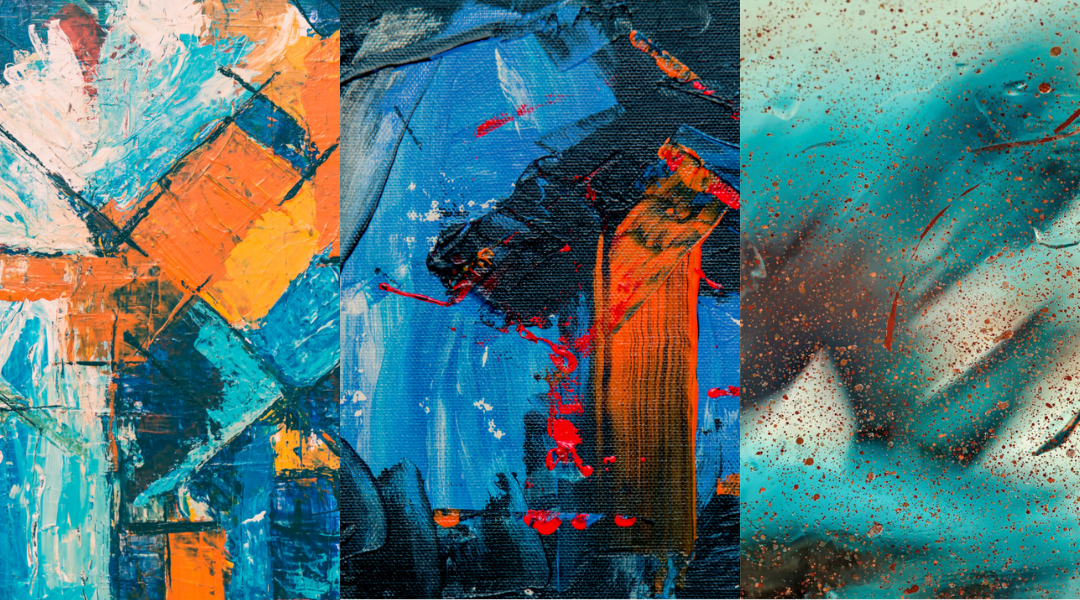Spontaneous, emotional, and chaotic. Since its start, abstract expressionism has embodied these characteristics to give American artists a means to express their emotions alternatively on canvas. Yet few truly know where this movement began, or how abstract expressionism gained its form within American art. Let’s take a moment to discuss the history of abstract expressionism and learn how its development changed the art world of today.
Abstract Expressionism: Early Beginnings
Despite the term originally being coined in 1929 by art historian Alfred Barr to describe Wassily Kandinsky’s works, the abstract expressionism art movement didn’t gain momentum until the late 40-50s when Jackson Pollock earned fame as an abstract expressionist from his “drip” paintings. He, too, created this effect by splattering paint onto canvases nailed to the floor.
But what was the point of these paintings for Pollock? What was the goal in randomly splashing paint onto the canvas? Well, at the core of its existence, abstract expressionism allowed artists like Pollock to complete expression of their emotions; the good, the bad, and the ugly.
Abstract expressionism emerged from the post-war trauma, anxiety, and social and cultural climate changes following World War II. Even though this period placed the United States as a global power, many artists who fled to New York City from the violence in Europe were left scarred, and as a result sought to express their turmoil through a combination of art techniques. This influence of styles from Matisse to Picasso inspired a new artistic movement within 20th-century American art that we know now as abstract expressionism.
Together, these modernist writers, artists and art collectors banded into the New York School—a diverse group of artists looking to expand artistic practices beyond convention under a unified belief that art is a deeply personal and emotional form of expression. Most if not all of the members of the abstract expressionism movement grew up during the Great Depression, thus inspiring most artists to expose the desperation and pain they endured through their works just like surrealists.
While artists like Pollock can be credited with building the foundations of abstract expressionism, art collectors like Peggy Guggenheim should also deserve notice for bringing the new movement into the public eye through showcases in her gallery: The Art of This Century.
Key Qualities of Abstract Expressionism
Abstract expressionism is an art form that combines multiple styles and techniques inspired by European modernist and surrealist works. Though presentation and color expression vary from artist to artist, abstract expressionism art shares a few common qualities:
Action painting: Coined in 1952 by critic Harold Rosenberg, action painting describes a chaotic form of abstract expressionism with splashes of paint and drippings on the canvas. Much like the splashes presented by Pollock, this form allows free movement and expression upon the canvas while using unconventional items to paint. Brushes, tools, or utensils help convey the image to the artist’s desire.
Color field: Color field paintings are simple, large expanses of solid color on canvas which are still of abstract expressionist nature but cohesive or monolithic. As abstract expressionism doesn’t have limitations for expression, famous works like Mark Rothko present large pieces of singular color or design for more thoughtful pieces reflecting his inner consciousness. Viewers can actually mark his health decline in his art, transitioning from brighter colors to darker palettes over time.
Large-scale: While large-scale pieces were not created by the abstract expressionism movement, most artists tend to use large canvases to fully display their works. In a way, this freedom of space allows more movement to each painting to impress the most feeling on the canvas.
Automatism: Automatism is a common abstract expressionism technique in which painters let their subconscious lead the way in their art. Rather than overthinking a design, automatism allows artists to naturally create according to the moment, making the creation process both relaxing and sincere for the artist.
Over time, more abstract expressionist artists emerged, boasting various styles and pieces to share with the public. In turn, more galleries like The Art of this Century opened their doors to abstract expressionism art, such as the Museum of Modern Art. Currently bearing about 200 abstract paintings in its exhibits, abstract expressionism has earned its recognition within American art culture. Today, abstract expressionism continues to build its revolutionary foundations through innovative creation techniques using sound, vibrations, and other tools to break the limits of artistic creation.


